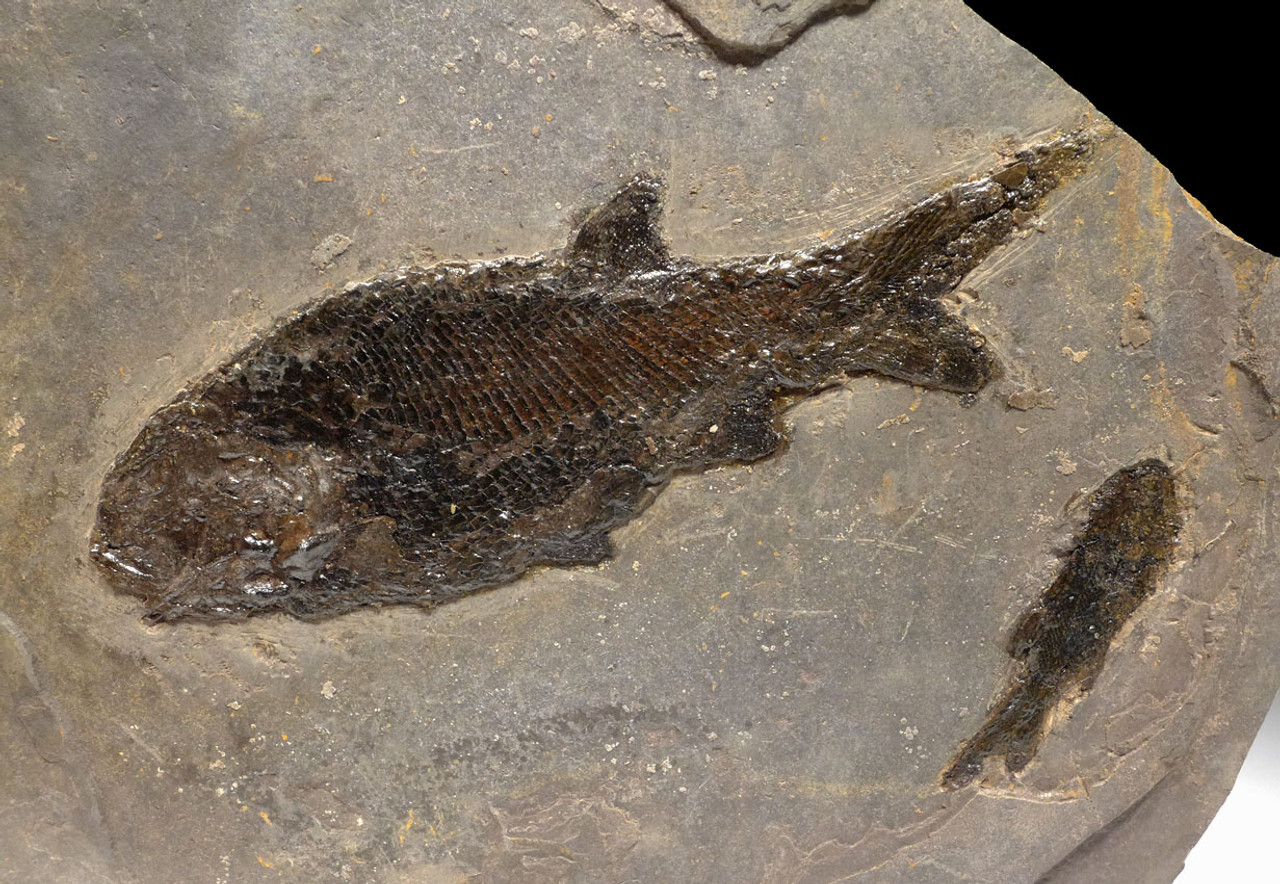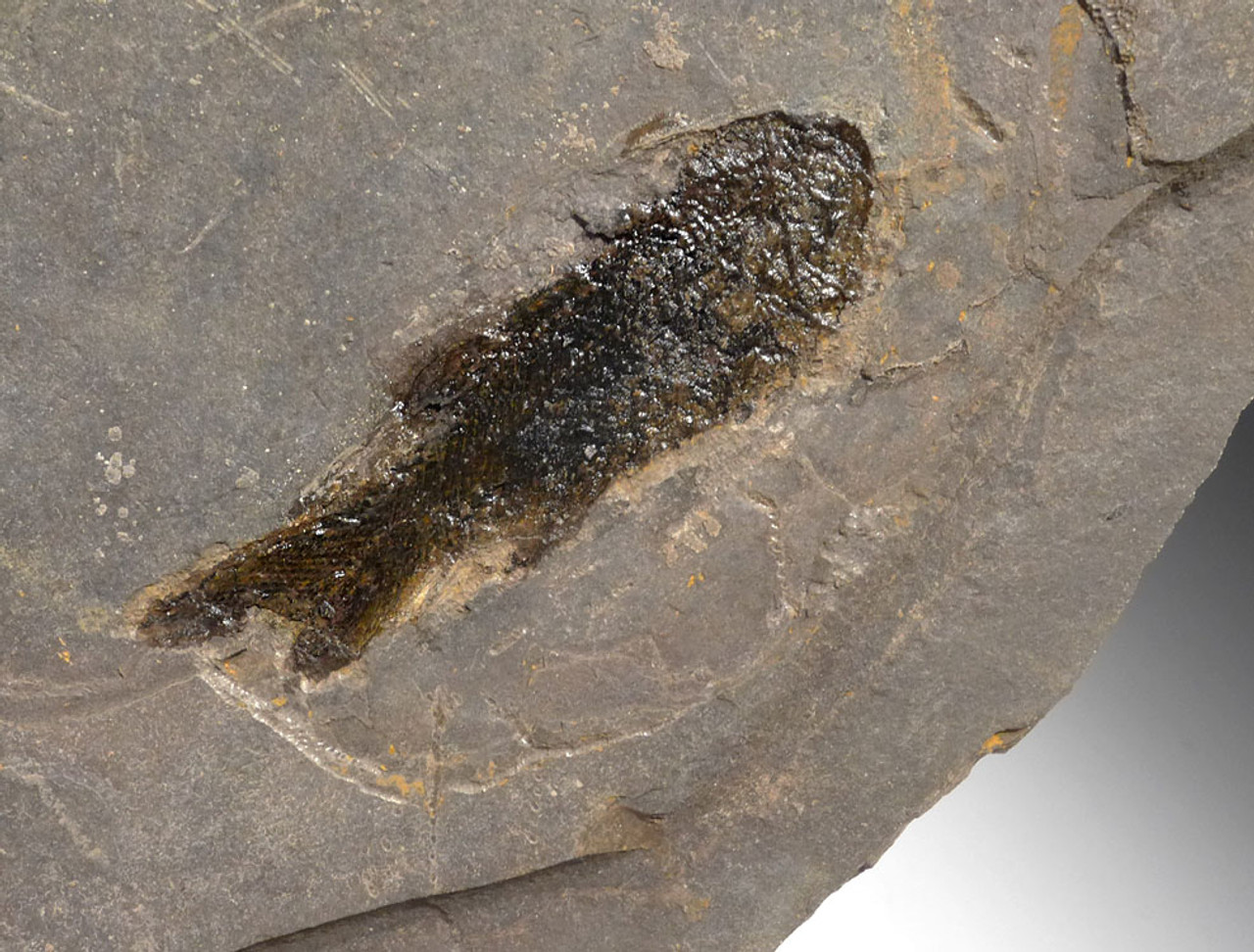Product Description
SPECIAL NOTE: The laws in this region of Germany have forbid the collection of these remarkable fossils since 1986. Such legislation has permanently ended the supply of such magnificent specimens such as this one being offered here. This rare example comes from an old German private collection and was collected long ago before the ban was enacted. With digging in the formation now off-limits, these German Permian fossils are sure to appreciate in value and become increasingly difficult to acquire.
While many prehistoric fish dominate fossil market, this authentic prehistoric bony fish is definitely scarce and one of the earliest of its kind dating to well before the vast majority of fossil fish usually offered for sale. This fish lived well before the dinosaurs and was alive even in the last days of trilobites! No fossil collection should be absent such a unique specimen.
In all fine quality, collectible fossils, the presence of subtle but rare features will have a dramatic impact in the value and price of a specimen. To be able to recognize and appreciate these features separates the true high-grade, world-class examples from the plethora of lesser quality specimens of the same species. This LARGE natural DOUBLE fossil Paramblypterus duvernoyi is a prime example of this. Features that are both obvious (very large fish and highly aesthetic natural coloration to specimen) and subtle put this one in a class all its own. Sure, you may find lesser priced Paramblypterus fossils, but they will have carved and reconstructed parts that are painted, smaller dimensions and lack much of the preserved features that this extraordinary specimen offers. THIS IS NOT A NEGATIVE IMPRESSION BUT A FULL COMPLETE POSITIVE FOSSILIZED FISH WITH ALL PRESERVED BODY PARTS ON ORIGINAL MATRIX.
Upon close inspection, some remarkable features are beautifully seen. Skull bone, fin and scale detail is heavy in its presence and in a state of preservation that is rarely encountered in these. The Paramblypterus was very primitive fish had an asymmetrical tail with the longer upper lobe having a small edge of fin and the rest being fleshy, covered with heavy scales like the rest of the body. The close-up image shows the impeccable fin and scale detail of this unique anatomy. Not evident in the photos is the thickness of the actual fish fossil. Entire slab is original and displays a GORGEOUS combination of naturally occurring layers of color to the fossil-bearing layers.
The back of the entire slab has been reinforced with epoxy. The Paramblypterus fish was a primitive osteichthyan (bony fish) and a member of the actinopterygians or ray-finned fish. Now extinct, Paramblypterus duvernoyi possessed some very primitive features, most notably, its shark-like tail with a fleshy upper lobe. To put in perspective just how old the Paramblypterus is, these primitive fish were around well before the very first dinosaurs, when trilobites were still alive!
 US DOLLAR
US DOLLAR
 EURO
EURO
 AUSTRALIAN DOLLAR
AUSTRALIAN DOLLAR
 CANADIAN DOLLAR
CANADIAN DOLLAR
 POUND STERLING
POUND STERLING




















